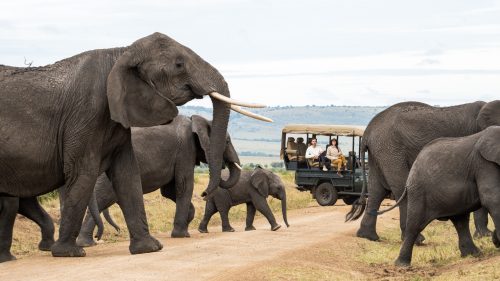
Head Guide Sammy Komu
Being a guide in the Maasai Mara gives you abundant opportunities to experience amazing sightings, yet as much as you get to see the same animals daily, every day is different. This particular morning we set out on an early morning game drive towards the short grass plains near the Kenya/Tanzanian border in search of the cheetah. But as we were descending the Oloololo Escarpment we could hear the roar of several lions coming from the river close to the Kichwa airstrip and decided to investigate. There we found the entire River Pride of about 11 lions, widely spread and seeming a little tense.
A few minutes passed and all of a sudden we could hear a commotion inside some of the orange-leafed croton bushes. Out of nowhere, a male lion (which we later identified as one of the 4 Bila Shaka boys) came out running with one of the lionesses hot on his heels. As she ran after him, the rest of the females joined their sister in chasing the unwanted male away. The chase lasted for more than 20 mins because the male wouldn't leave. The roaring from both the male and the females a few meters from the vehicle was incredible — one could feel the sheer strength of the animals from just the sound they made. What we couldn’t make out is that the male actually belonged in the territory, he wasn't a new male being introduced. We concluded that it might have been that the male wanted to mate but the females were not ready since they still had cubs — but that’s nature, it's full of mysteries.
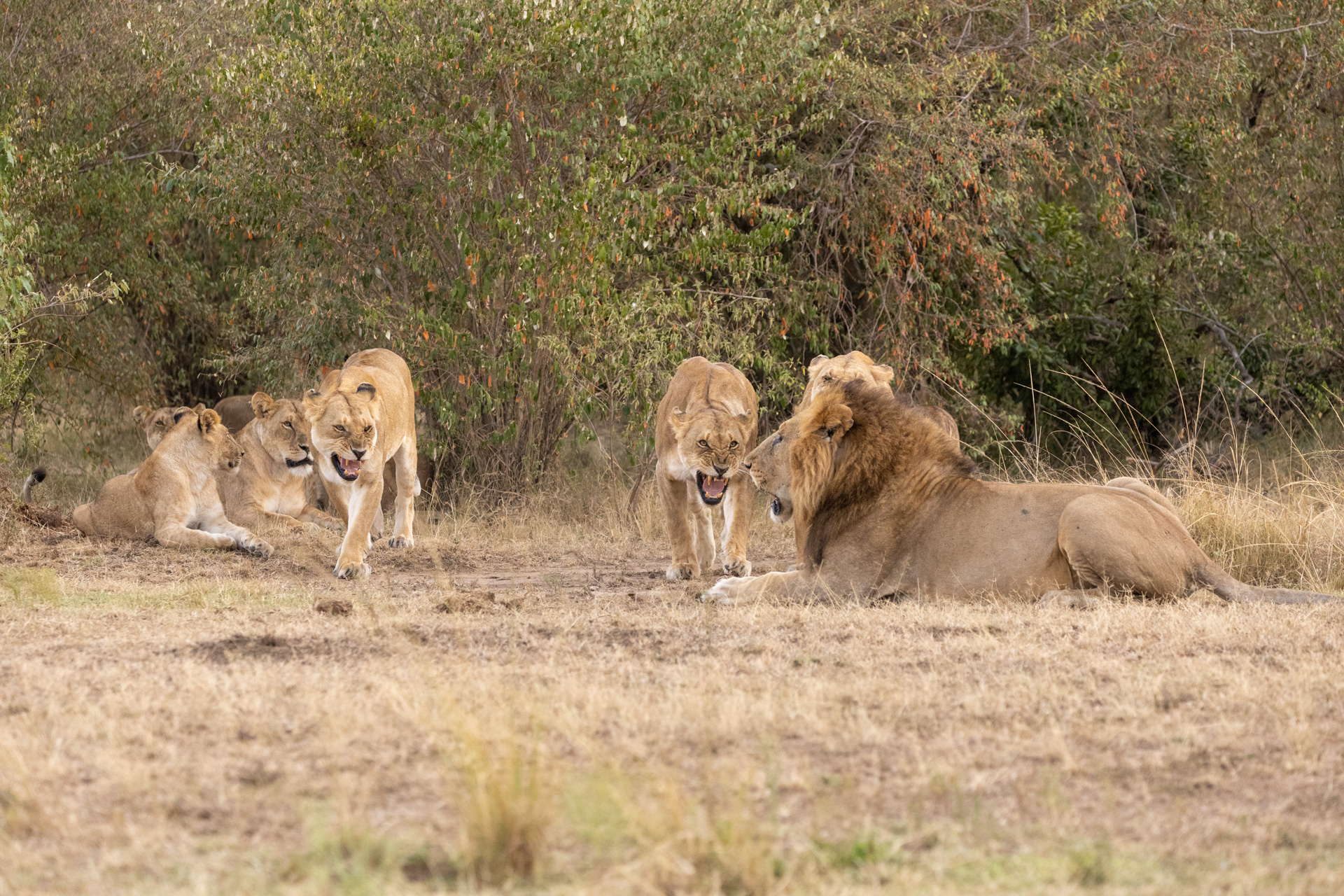
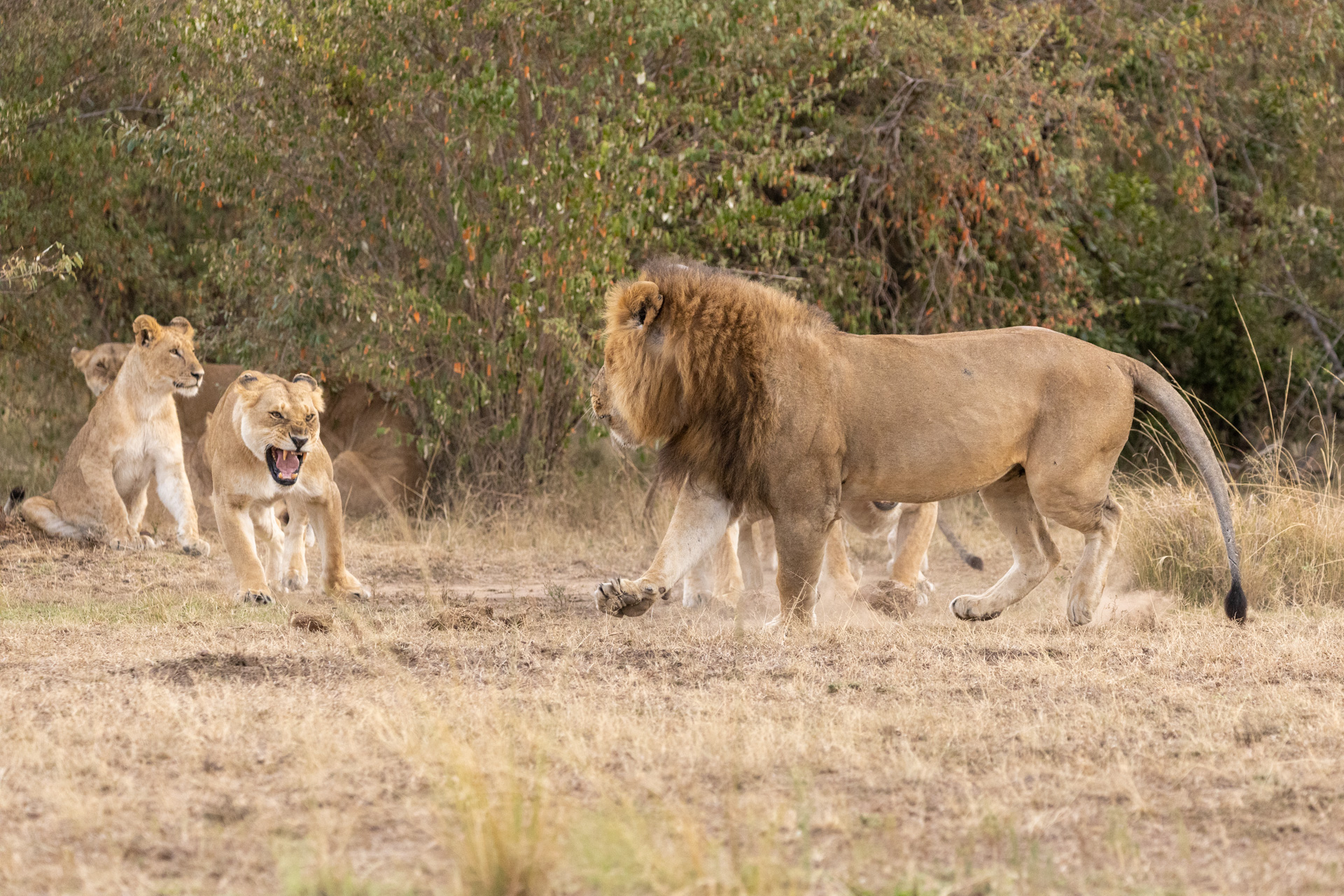
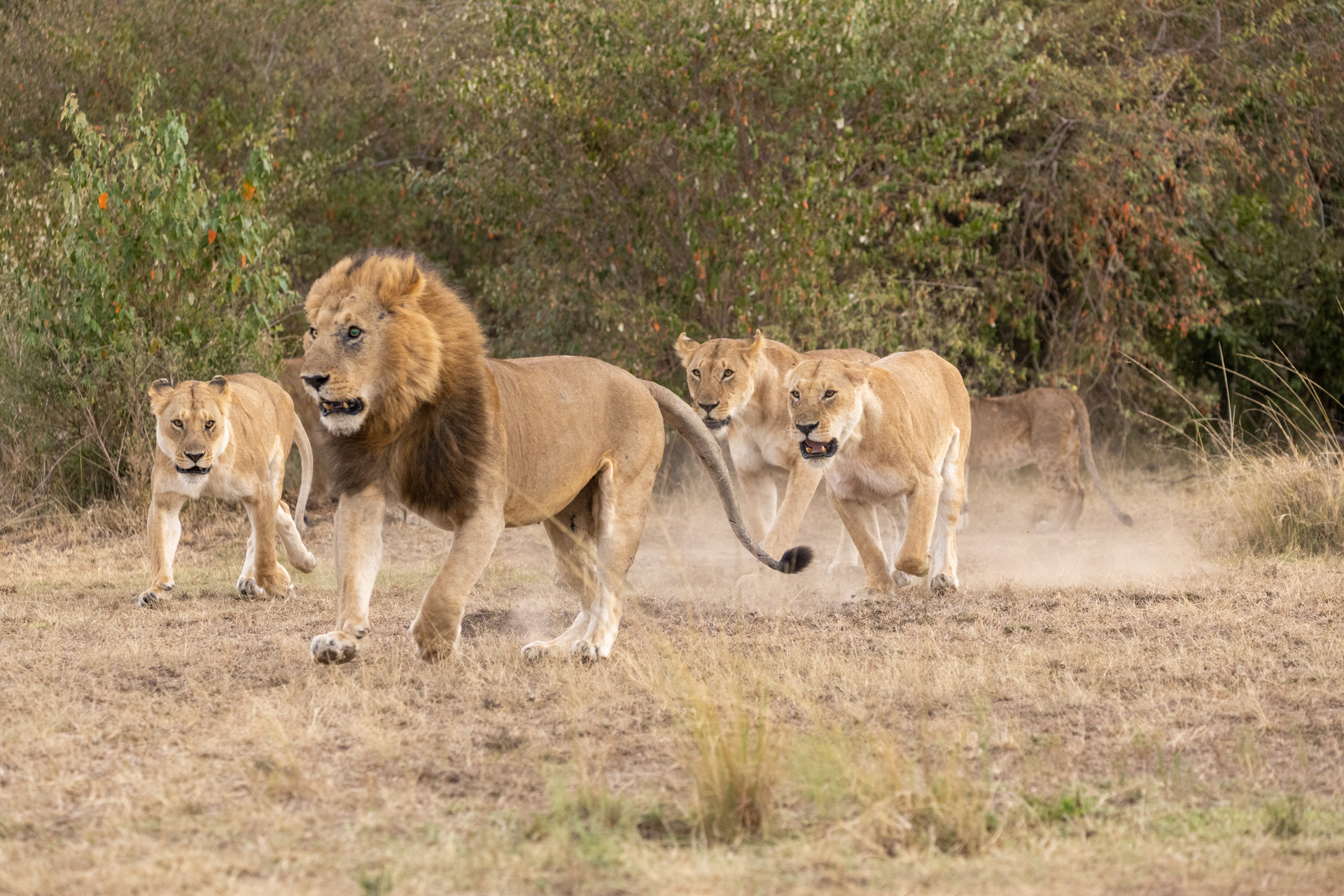
Assistant Head Guide Douglas Onsongo
For many years, the story of the greatest of giants has been told. I had dreamed to see Africa's Super Tuskers near the highest point in Africa — but it had always been a dream. However, thanks to the beginnings of Angama Amboseli opening in the pristine Kimana Sanctuary, my visits to this beautiful part of Kenya have been frequent in the last year. Amongst the many elephants, I longed to photograph the top tuskers. The first I was to meet was Tolstoy, a holder of magnificent tusks. Sadly, this was a brief acquaintance before he died of an injury inflicted upon him by a spear. There is a great need to address human-wildlife conflict in this important ecosystem that I am about to call my second home. My subsequent visits were all exciting, and I was finally able to photograph the famous Craig — I found him in the heart of the corridor that connects Amboseli National Park to the outside world. His presence overshadowed me in a hundred ways, like being diminished by the mighty Kilimanjaro. I felt powerless, deprived of a presence by two of Africa's greatest.
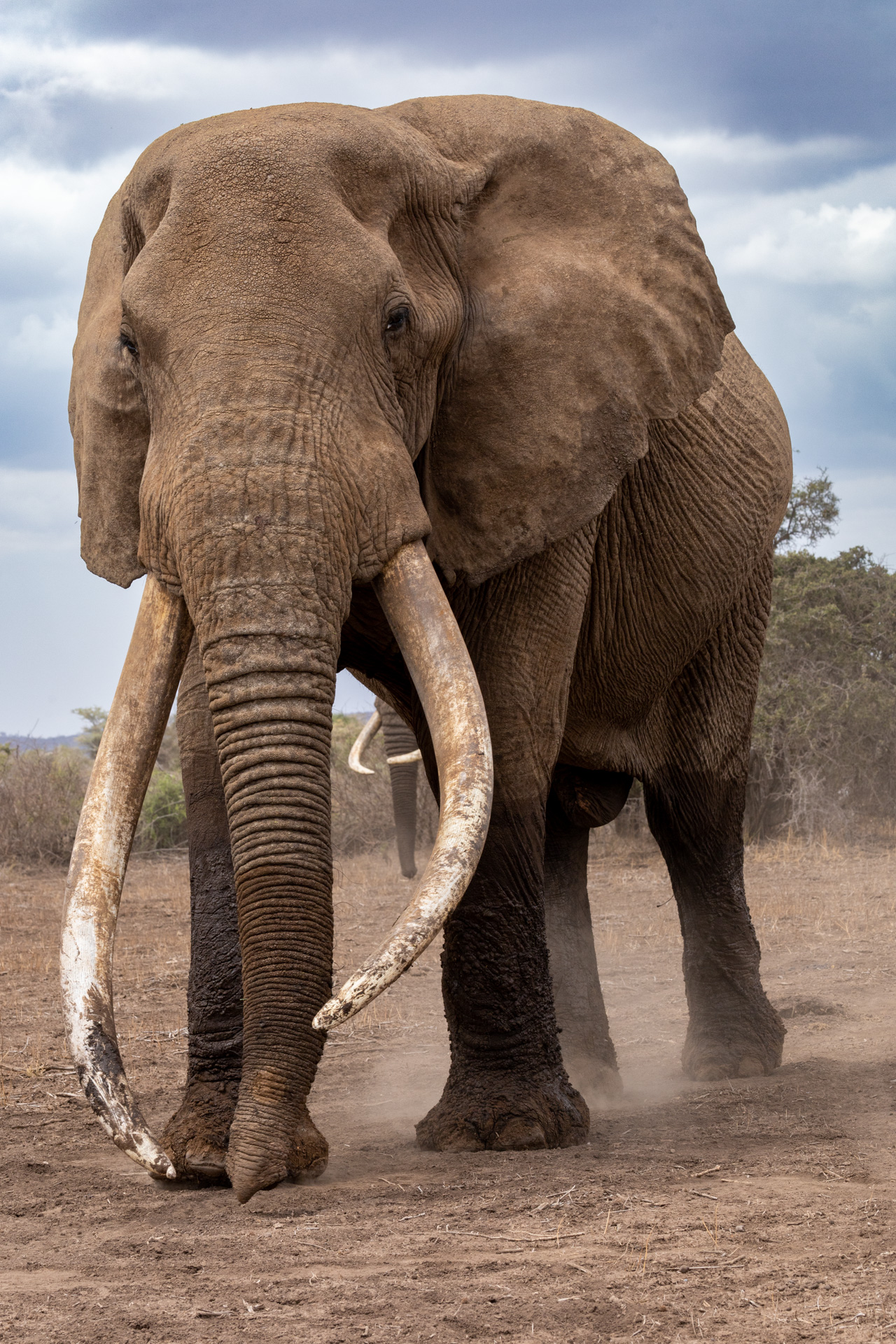
Wilson Naitoi
One morning, we came across a pride of eight lions who had just brought down a female buffalo. Shortly afterward, a young buffalo, probably the female's calf looking for her, wandered straight towards the kill — the lions ambushed and killed it 50 meters from the mother. Then they started eating the young buffalo first.
Sophie Sadera
We started our morning drive in search of big cats and we were very successful as we got to see them all, including Shujaa the big male leopard. On our way back for lunch, we got extremely lucky to see an African rock python killing a baboon. What a scene to witness — all the big male baboons trying to rescue one of the family members but the python was so quick rapping around the baboon to constrict it. Eventually, the baboons gave up hope and walked away when the python began swallowing. What an awesome drive it was.
Erickson Lemaalo
It was August, during the phenomenal wildebeest migration and I had packed lunches for my guests so we were ready for a full day in the Mara. I had no idea I was about to go on the most productive drive in my entire guiding career! We saw three wildebeest crossings at Lookout crossing point and there was a leopard and lions hunting on the banks as the wildebeest crossed. It was a 'Wow' experience, even for. me. I then proceeded towards my favourite desert date tree for lunch and champagne to celebrate the most memorable day. We finished having lunch at around 2:00 pm and started a short drive back to the lodge, but my instincts were telling me to keep driving along the Mara River on the eastern side. We couldn't believe our eyes as we watched another crossing at the BBC crossing point (my favourite) with the dusty dramatic shots of the huge jaws of the Nile crocodiles. It was a private crossing, with no other vehicles around, and we were able to get the classic migration videos and pictures.



Ekai Ekalale
After three days of driving in the Mara Triangle with a group of guests, our fourth and last day was all about exploring. We went to Nyumba Nane with the aim to see a new landscape and came across two lionesses resting in the open. One of them was gazing up into the sky as two Bateleurs and a vulture glided above. She saw them land a kilometer away and started walking towards them. Behind her, a hyena followed and two jackals out of nowhere also joined the convoy.
When we arrived at the spot where the birds had landed, what we found was just astonishing: a brand-new zebra foal had just been born and the mother, with the placenta still attached, was watching helplessly as the lion and scavengers moved towards her. She quickly gave them space and the predators started fighting for the readily available food. The lioness won and we watched as she moved around with the carcass from spot to spot as the hyena and jackals licked the clotting blood in the short grass.
Robert Kiprotich
Just when you think you’ve seen it all, something new and exciting happens. In April this year, on a game drive with my guest, we got lucky to see an African rock python that had killed a gazelle and was trying to swallow it head first. It was actually trying to drag the gazelle to a nearby stream of water to soak the prey as it constricts it to break the bones so that it can swallow it more easily. It’s never a dull moment in the Mara triangle.


Jackson Etoot
It was a very chilly morning when we came across a clan of hyenas feasting on a dead elephant at a place called 50km within the Mara Triangle. They had started feeding and opening the elephant from the rear. There was lots of excitement, laughter, and giggles from the hyenas which seemed to have attracted lions. With no time wasted, the lions pounced on them and great commotion ensued. It all happened so quickly that one of the hyenas was forced to squeeze itself into the elephant's stomach for refuge from the pride of lions. They couldn't get to the hyena unless they ate through the elephant which could take them a couple of hours.
Not bothered by the hyena’s presence inside the elephant's stomach, the lions started feasting. We watched in amazement as the hyena, once scared to death, now comfortably started feeding on the elephant from the inside out! We kept watching these big carnivores devouring the largest land mammal waiting to see the fate of the hyena inside the elephant's belly.
The scorching sun eventually forced the lions to surrender under the shade of the desert date trees. Now with the lions away, we saw the hyena attempt its escape by coming out through the same opening it used to get in — but with its head out, the rest of the body remained stuck inside. We stayed for a couple of hours watching the poor thing desperately trying to get out as we tried to understand and interpret the richness of nature.
Jeremy Macharia
We were driving in the late afternoon on our way back to the lodge, and saw a first for me — a spectacular cat. At first, I pointed out a shape walking on the road some distance away and my guests thought it was a jackal but I noticed something was different in how the belly moved. I stopped and we had time to look as fast as we could with our binoculars from around 60 metres away. It was an elusive caracal! Being a wildlife photographer, of course, I had no camera or phone to take a shot. It will always linger with me, a short but amazing moment it was.
Moses Kibet
I had two couples with whom we set out on a full-day drive. The plan was to explore the southwest of the Mara Triangle looking for the cheetah, a leopard, hopefully, and the even-fainter hope of a crossing. We got lucky as we found Risasi, one of the best cheetah mothers, with her cubs. She even chased off a hyena that got too close to the cubs. As we headed to the Mara River, to my surprise there was a reasonable group of wildebeest and zebra looking as if they wanted to cross. I was shocked because there hadn't been any river crossings for over a week and a half. This is where I knew we would stake out. Everyone was getting into position to wait, but luckily in the Triangle, there are only a handful of vehicles.
Remember, we had really been hoping to see a leopard… guess who also heard the commotion of the wildebeest and zebra? None other than Lokorgol, a big male leopard that roams the southeast. He positioned himself in the croton bushes among the vehicles hoping for what everyone was hoping for — a river crossing. We all waited patiently as the adrenaline rushed through us while the wildebeest did their dance, going down the bank and back up a number of times. At last, there was a huge cloud of dust and the crossing began.
Positioning was tough as it was hard to know what action to choose — there were crocodile kills, a leopard kill and then some lionesses sprang out of nowhere… resulting in the leopard taking off. There was so much action and just as quickly, the crossing stopped. The last few wildebeest were struggling up the bank towards their death by the lionesses. One of the lionesses that didn't get lucky was walking towards the abandoned kill made by the leopard. To our surprise, the poor young wildebeest hadn't been killed by the leopard and it got up just to be ended by the lioness. We were in awe. It was such an amazing day. As we drove back to the lodge everyone was in disbelief. We were joking with one of the guests because she was emotional about the last lion kill but she also wanted to enter the Greatest Maasai Mara Photographer of the Year competition. During all the day's commotion, we could hear her cry and this is how it went: sniff sniff…. click click click… sniff sniff.
Alice Mantaine
We had a fantastic morning with great sightings and were heading back to the lodge to rest a bit. As we were approaching the escarpment, we found an impala that had just dropped a baby and was licking it clean. We were so excited to see this new life start and we stopped there admiring it until it took its first steps. It was beautiful.
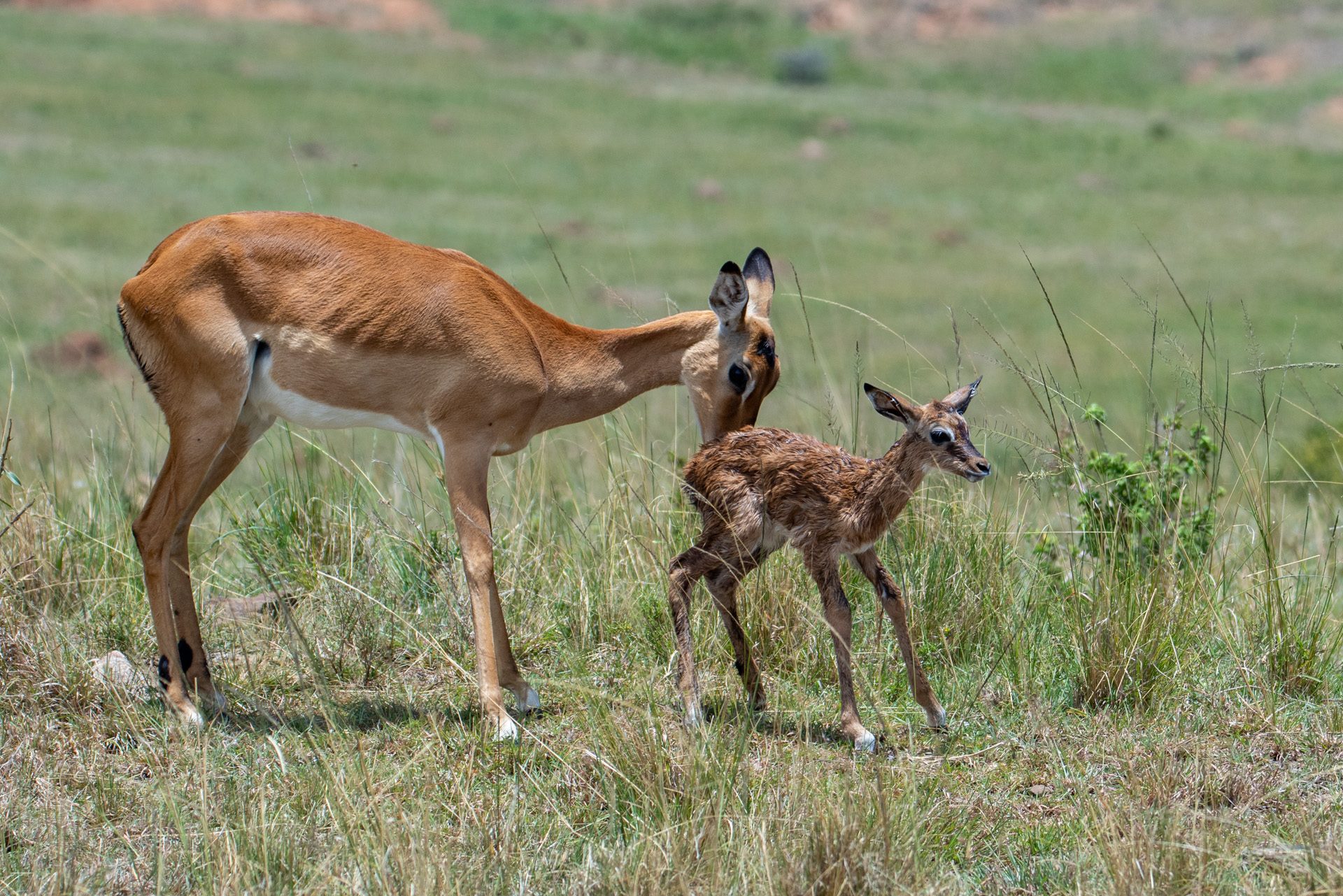

Titus Karega
When we set out on game drives, be it early mornings or afternoons, we always step into it with high expectations — to see amazing things like pangolins or porcupines and sometimes a leopard with its kill in a tree. Of course, we can never know how it’s going to turn out, but I always say, 'let’s take what nature has to give'. One thing about the Mara is it never disappoints. This year we were so fortunate to have a female cheetah, Risasi, who had given birth to four cubs on the south end of the Reserve towards the border between the Mara Triangle and the Serengeti. I think it has been nearly seven years since I've seen a cheetah able to raise its cubs past three months old. These little ones have the hardest upbringing as they are the most vulnerable to predators.
On this particular drive, we set off to witness Risasi doing what she loves. It was September and the savannah was booming with baby topis, warthogs and Thomson gazelles. We were among the first vehicles and found her looking for what to serve her cubs for breakfast. Since we knew the targets, we were perfectly in position with the herds between us and Risasi hoping she would chase them toward us. Within seconds, she was running like a bullet, scattering the harem of Thomson gazelles feeding peacefully. The mother gazelles flew in the opposite direction of the young ones to create confusion but the Risasi already had her target. About 60 meters from our position, she brought down her cubs' food for the morning. I’ve witnessed cheetah kills before but that was the most spectacularly close kill I’ve seen in a long time.

John Matu
It was 18th of July, the day still fresh in my mind. Being a migration month, all the attention was on the river crossings. The herds were already in the Maasai Mara and by that time they had concentrated along the crossing points that are down south towards the Purungat Gate but on the Greater Mara side. As is the norm, we positioned our vehicles about 200 yards away from the river to give the animals enough space to come drink before they figure out about crossing over to the Triangle. This day, the animals were behaving strangely.
They kept moving towards the river but were all very nervous; on the road was a small animal walking towards them. After scanning through the binos, we realised that the animal was a male leopard. It came and walked down the river bank and disappeared into one of the bushes along the riverbank. Because of the heat of the midday sun, we thought the leopard was looking for shade and that’s why he hid in the bushes. We kept on waiting for the migrating herds to cross; they were all thirsty and pushing their way to the river. After a while, the whole herd came down the banks and started crossing to our side while others were drinking which created a whole new scene and made us forget about the leopard. Within minutes, after a few hundred animals had crossed, the remaining ones sprinted up the bank and with lightning speed, the leopard grabbed a wildebeest calf by its neck.
Elly Ledama
Like Sophie, it was on a morning game drive along Maji ya ndege area that I heard baboons barking and I knew something was happening. I drove closer to try and see what it was because the grass was high at that time of the year. At first, I saw baboons in a semi-circle and after a few minutes, I saw a rock python had strangled one of the baboons. The rest of the baboons were trying to help but the python didn't let their fallen brother go. We stayed there until the whole baboon was swallowed.

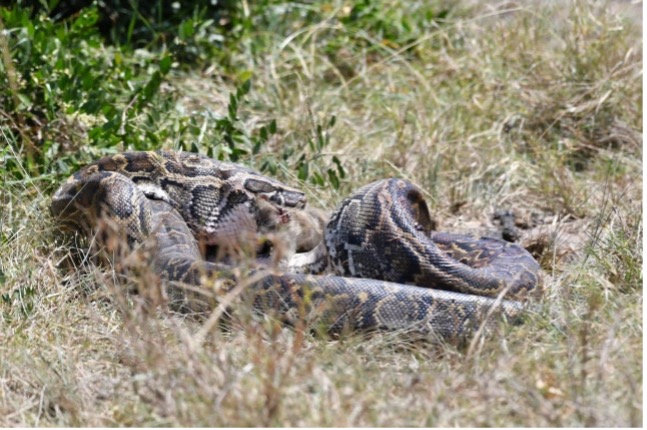
Daniel Njiriri
In mid-August this year, I was lucky to be assigned to guide a kosher group. As I picked them up from Kichwa Airstrip, the only thing they requested to see was a kill. They told me they had been in Tanzania and Northern Kenya and had seen a lot but the only thing that was missing was a kill. I briefed them on safety, how the game drives work and what we must do if we want to see a kill — it's all about patience, being in the right place at the right time, etc. They understood and agreed. Now that we were on the same page, it was time to take them up to the lodge.
I had seen a female lion on my way to the airstrip so I thought it would be nice to take them there on their way up. When I got to the lion she was already close to a family of zebras so I reminded the guests about patience and they agreed to wait. Before I had even finished explaining how the lion had a good opportunity to take down the stallion on the side, the lioness was sprinting at full speed chasing the zebra. She jumped on his back and both fell on the road just in front of our jeep where they wrestled with each other for about 10 minutes before the lioness managed to kill it. It was so incredible to see a kill that the guests had requested before even getting to the camp.
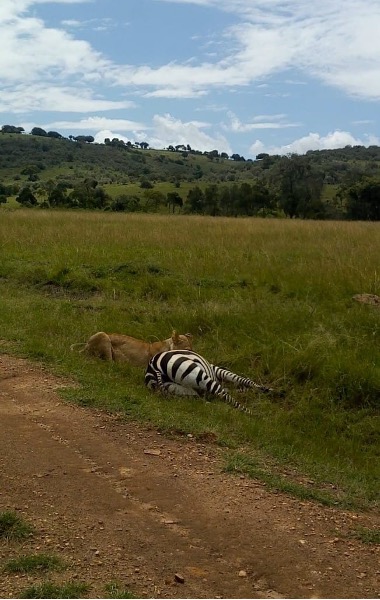
Kenneth Tanui
Having worked in the Mara for seven years, this year was extraordinary in terms of how many times I saw snakes. I especially enjoyed seeing the largest snake, an African rock python, on a number of occasions along with black-necked spitting cobras and puff adders. The highlight of all these snake sightings was when I found a python swallowing a whole adult impala — it was unbelievable, something I had not seen before. To digest all of it, it took the snake over one week without moving from the same spot. Every time I received new guests I took them to see the snake. That meal can last him for another couple of months without hunting again.
Frederick Sinoni
In the Mara, having to choose a favourite sighting is never easy. You have to be incredibly biased; it is the only way to settle on one. We all know the migration and the drama that comes along with it, from the river crossings to the predator action. These are on every guest’s bucket list. This year’s migration season was no different as there was plenty of action but one scene was most exciting to me.
As usual, there are casualties who do not make it either due to predation or merely succumbing to fatigue. Fortunately, nothing goes to waste and there are those who benefit from the chaos. Vultures always travel with the herds, knowing well that at some point someone is going to fall down. On one morning drive, I decided to explore the southwest part of the Triangle where the mega herds were concentrated. I quickly stopped to scan through the dense herds and saw vultures descending on a carcass not far from the road. I quickly drove closer to have a better view of the chaotic feeding frenzy. I enjoy watching the messy, noisy dining. Despite zero table manners, the sighting turned out to be my favourite this year, the reason being that all six species of vultures were present. I actually had a lifer in that sighting, my first Egyptian vulture!
Filed under: The Mara
Subscribe for Weekly Stories
Comments (0):
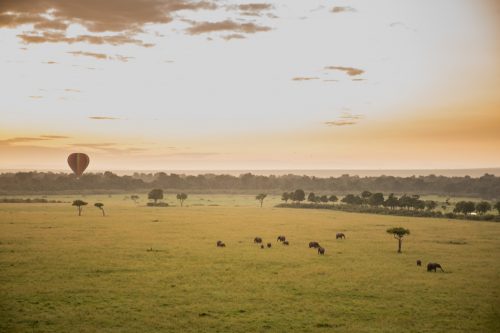
Hot-air Ballooning